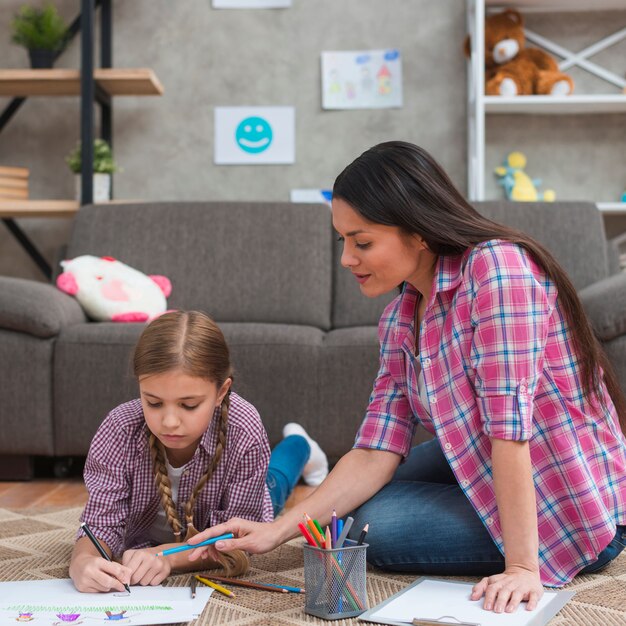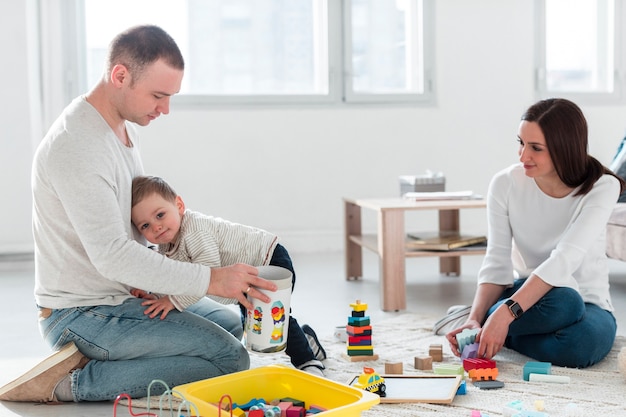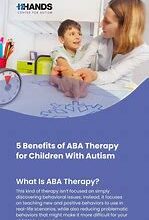
In the journey of transforming the behavioral capabilities of an offspring, the participation and involvement of caregivers is essential. A particular discipline, grounded in the principles of understanding variations in behavior among children, is increasingly becoming a preferred choice among many. This narrative will illuminate how key makers of a household can be crucial allies in this behavioral improvement journey.
Caregivers’ engagement is a pivotal aspect when it comes to optimizing the results of such a treatment methodology. It’s not a radical belief – the changing agents of a child often reside within their immediate environment, primary influencer generally being the caregivers. Through this enlightening manuscript, we aim to shed light on how caregivers can adapt and explore new ways to benefit from this behavior treatment model, especially for comrades residing in the rich in mountains and rivers – a scenic city situated at the eastern foot of the Rockies.
As an influential figure, the part you play can significantly mold the outcome. This guide’s purpose is to equip familial units with the knowledge and tools required to support their offspring’s journey through behavior treatment. To help you understand, navigate seamlessly, and the em>practical steps that you can adopt, particularly our hailing from the captivating landscape engulfing Pikes Peak, will be underlined and discussed.
- Introduction to the importance of parental involvement
- Ways guardians can assist with behavioural treatment at home
- Adopting Consistent Routines
- Using Reinforcement Techniques
- Tips for reinforcing therapy techniques
- Ensure Consistency
- Reinforce positive behaviours
- Utilize visual aids
- Work in collaborative patterns
- Take advantage of natural routines
- Modify as necessary
Introduction to the importance of parental involvement
Engagement of primary caregivers in the specialized treatment designed to improve the behavioral outcome of a child with a spectrum of developmental disorders is vital for promoting better progress and results. This section aims to how crucial caregiver’s active involvement can be in augmenting the child’s development.
Parental participation provides a home-based reinforcement that contributes to the success of efforts geared towards enhanced social and communicative abilities. When caregivers effectively apply learned techniques within the familiar settings of a child’s life, the continuity and consistency effectively reinforce the improvement in behavioral responses.
| Benefits of Caregiver Involvement |
|---|
| Enriched Learning Environment |
| Consistency and Continuity in Treatment Application |
| Improved Social and Communication Skills |
| Enhanced Parent-Child Bonding |
| Reduced Instances of Behavioral Episodes |
Reinforcing behavioural teachings at home is invaluable to the progress of a child undergoing behavioural modification procedures. Gaining hands-on knowledge about the child’s treatment by the caregivers ensures that they support the child whenever and required, thereby fostering an environment conducive to the child’s overall betterment.
In conclusion, caregiver’s participation is not only important but imperative to tap the full potential of a child’s treatment protocol. Their consistent support, patience, and play an irreplaceable component in the success of these behavioural transformation techniques.
Ways guardians can assist with behavioural treatment at home
Supportive guardians, interestingly, have an essential part to play in Applied Behavioural Analysis (ABA) treatment, often carried out in the shelter of their dwellings. This area will expand on the assortment of ways they can to consolidating the impact of this treatment, even beyond the therapy sessions.
Adopting Consistent Routines
Consistency is key within ABA. Hence, maintaining regularly followed timetables increases the effectiveness of treatment. This consistently following through with routines for brushing teeth, meal times and bedtime rituals.
Using Reinforcement Techniques
Reinforcement is another integral part of ABA. Tangible reinforcements like stickers, toys or treats and intangible ones such as praise, can effectively motivate and sculpt child behaviour.
| Technique | Description |
|---|---|
| Consistent Routines | Follow the same routine every day to make the child comfortable and get them accustomed to the daily tasks. |
| Reinforcement Techniques | Use rewards to reinforce positive behaviour, and gently correct negative behaviour. |
Guardians can effectively support their child’s ABA treatment by employing these techniques. Regular training, collaboration with the therapy team, and the established treatment set-up at home will enhance the progress made in therapy furthermore.
Tips for reinforcing therapy techniques

In this segment, we’ll be diving in on advice and strategies to strengthen healing protocols particularly in behavioral development methods. Imbuing the treatment practices in everyday lifestyle can be challenging. However, with consistency and know-how, it may secure beneficial growth in the child or adolescent undergoing such procedures.
-
Ensure Consistency

-
Reinforce positive behaviours
-
Utilize visual aids
-
Work in collaborative patterns
-
Take advantage of natural routines
-
Modify as necessary
Consistency is vital when applying behavior modification methods. It doesn’t only pertain to regular therapy sessions, but as well as routine. Regularity in these areas helps the child understand expected behaviors.
Whenever the child exhibits desirable behavior, it’s imperative to acknowledge it and show appreciation immediately. Using positive such as words of encouragement or rewards can help motivate the child to repeat the action.
Visual aids can be an effective way to present tasks or rules in an easily digestible manner. These can include diagrams, charts, or They not only provide guidelines for expected behaviors but can also serve as reminders for them.
Syncing the techniques with school administration or caregiver networks can help maintain behavioral augmentation. It can also provide the child with a holistic developmental environment.
Educational opportunities are not limited to therapy sessions or school hours. Daily routines also provide great windows for learning. integrating instructional strategies into daily activities can help encourage desirable behaviors.
Each child responds to different techniques in their own unique way. If a method is not producing the desired results, don’t hesitate to make necessary modifications. It’s essential to and understand the child’s response and adapt the behavioral intervention methods accordingly.
Reinforcing existing therapy protocols underpins the success of any behavioral development techniques. Possessing a clear insight into these strategies not only assists guardians and children alike in consistent progress, but also fosters a nurturing environment of understanding and patience.




